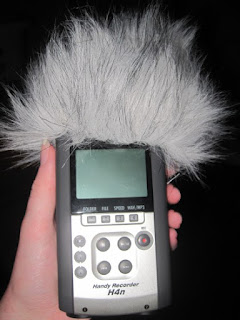Working in video games, you often get to cover the whole range of tasks in the audio spectrum - mixing, recording, sound design, implementation. Ambience, foley, voice over, music. It's good, it keeps things diverse!
Sometimes, though, you feel as though you've turned into Dr Frankenstein as you wield scalpels to painfully perform cosmetic surgery on a face that was already beautiful.
Today was one of those days. I'm still not entirely sure what happened further up the line, but it turned out the pickups that were recorded for one of the languages used a different voice actor for the main character to the voice they recorded the rest of the lines with. They went to some effort to use a soundalike, but the result unfortunately remained jarringly obvious, especially as many of the lines are played back-to-back with lines performed by the original actor.
With little prospect of a re-record so close to submission, the best bet was to try and mould the new voice over to better match the original - at least enough to fool an ear on casual listening.
In other words, my goal for the day became to make 25 lines of this:
Sound as much like this as possible:

This is one area I've found Audition has always been pretty good for - this kind of awful corrective surgery. It's always been a bit weak in multitrack and surround editing (although reports so far indicate that the latest edition of the program have gone some ways into correcting this), but as a stereo editor, once outfitted with some external plugins, it's one of my favourites.
I do wish there were more EQ-matching plugins around, though. This would have been the perfect moment to have a reliable one on hand. The few I've tried in the past have hovered between not very good and nightmarishly user-unfriendly. To the point where I get better results attacking the spectral view with an effects brush and painstakingly fiddling with graphic and parametric EQs, flicking back and forth between examples.
The ideal such plugin would be to load an example waveform in for analysis, then to save that analysis out as a preset that can then be applied to the sound you wish to modify (with adjustable parameters, naturally). There have been a lot of instances where this would save me so much time - instead of fiddling with EQ, I could focus on other areas like pitch and volume correction.
I've heard there's a fairly expensive ProAudio VST bundle going around with something a bit like this. But in retrospect, maybe this is actually a bit lazy. I have, essentially, just made a wish for a plugin that will do half of the mastering process for me. Next request: Press button, make soundtrack.

